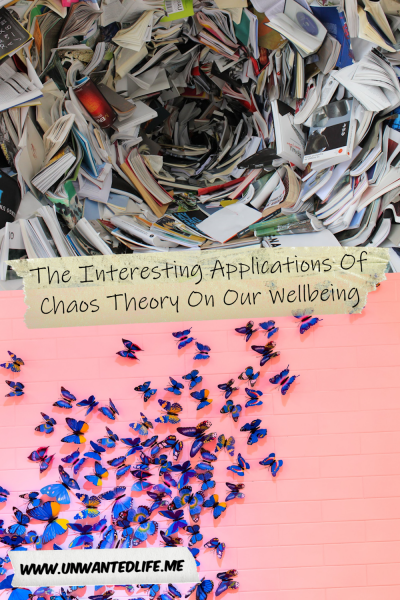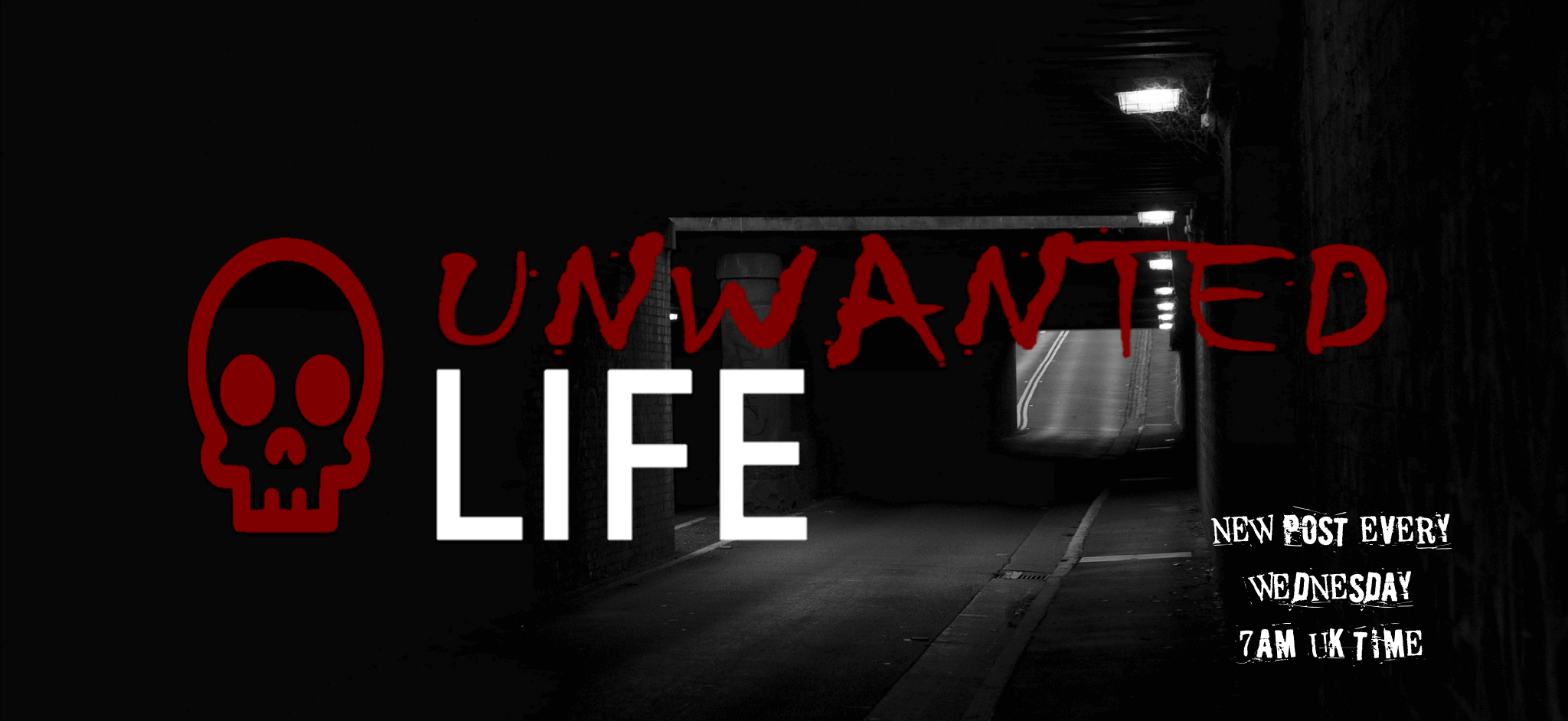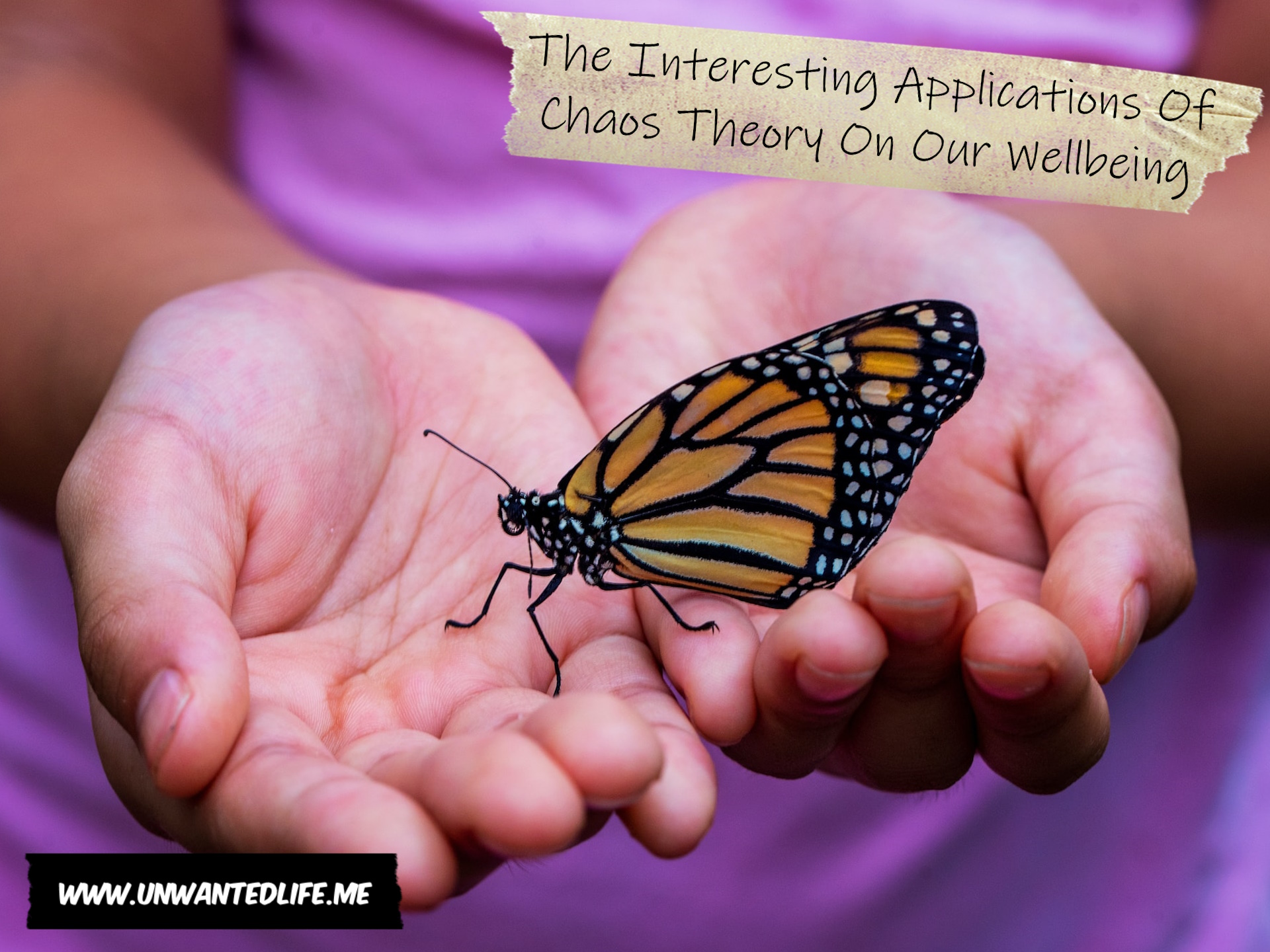Because of my dyslexia, I don’t tend to read books. In fact, I can count all the books I’ve read from cover to cover in the last two decades on one hand. One of those books was Chaos by James Gleick, my introduction to chaos theory, which I found captivating. Since reading that book, I’ve often interpreted some of what I’d read and applied it to my mental wellbeing. So today, I thought I’d expand on that and create an article that looked at the applications of chaos theory on our mental wellbeing.

What Is Chaos Theory
Chaos theory is a branch of mathematics that studies complex systems that are unpredictable and sensitive to initial conditions. It can teach us a lot about mental well-being, as our minds are also complex and unpredictable systems.
A line from Boccaletti, Grebogi, Lai, Mancini, and Maza’s (2000) work states that “It is reasonable to assume that one does not have complete knowledge about the system dynamics since our system is typically complicated and has experimental imperfections” sums up for me how hard it can be to understand a person, even as a therapist, and even though that wasn’t their intent. Humans are complex and imperfect, and often we don’t know ourselves what’s the cause behind our mental health issues.
Wellbeing And The Applications Of Chaos Theory
Chaos theory, which explores complex and unpredictable systems, can offer valuable insights into mental wellbeing using some of the potential applications of chaos theory.
Sensitivity to initial conditions
Chaos theory emphasises how small changes in initial conditions can lead to vastly different outcomes. This concept reminds us of the interconnectedness of various factors that influence mental wellbeing. Small changes in habits, routines, or thoughts can have a significant impact on our mental health.
One of the key lessons of chaos theory is that small changes in initial conditions can lead to large and unpredictable changes in the long term. This is known as the butterfly effect. This applies to our mental wellbeing as well. For example, a seemingly small event, such as a negative comment from a colleague, can trigger a downward spiral of negative thoughts and feelings. This is why thought challenges like putting your thoughts on trial and looking for the silver lining can be useful, as they can be used to avoid the downward spiral.
Embrace uncertainty
Chaos theory shows that unpredictability is an integral part of complex systems like human psychology. So accepting that we can’t control everything fosters adaptability and reduces anxiety.
Self-organisation
Another lesson of chaos theory suggests that systems can self-organise into more stable patterns. In the context of mental health, this reminds us that, with effort and support, people can adapt and develop strategies to promote wellbeing and recover from challenges. This means that we can find order and structure, even in the midst of chaos. We can heal ourselves and grow from difficult experiences, as outlined in my article on finding the silver lining.
Adaptation and resilience
Chaos theory can teach us about the importance of resilience. Resilience is the ability to bounce back from adversity. Thus, chaos theory’s focus on adaptability and resilience aligns with principles of mental wellbeing. It emphasises the capacity to respond and adapt to stressors and challenges, promoting mental strength. Resilience is built through the experience of adapting to the stresses that life offers and getting through them.
Nonlinear dynamics
Mental wellbeing is often nonlinear, with complex relationships between different aspects of our lives. Chaos theory encourages us to consider the nonlinear nature of mental health, understanding that small efforts in self-care or positive changes can lead to exponential improvements.
Balance is dynamic
Wellbeing isn’t a fixed state, but a delicate equilibrium we need to continually recalibrate. Learning to adapt to life’s turbulence using self-care strategies will help restore equilibrium.
Butterfly effect
According to Oestreicher (2007), the anecdote of the birth of the butterfly effect was the following:
Making the same calculation rounding with 3-digit rather than 6-digit numbers did not provide the same solutions; indeed, in nonlinear systems, multiplications during iterative processes amplify differences in an exponential manner
In short, the butterfly effect in chaos theory suggests that a small event, like the flapping of a butterfly’s wings, can set off a chain reaction with far-reaching consequences. Similarly, a seemingly minor life event or decision can have profound effects on mental wellbeing. This underscores the importance of mindfulness and awareness of our choices.
However, that also means you can leverage the butterfly effect because small actions can spur large changes. Making tiny improvements to your habits, thoughts, or environment can profoundly impact your mental wellbeing.
Complex interactions
Chaos theory highlights the intricate interactions within systems. Numerous factors, including genetics, environment, social support networks, and personal experiences, influence mental wellbeing. Recognising this complexity can help people appreciate that mental health challenges may arise from multifaceted interactions. Meaning, several things might need to be factored in when wanting to make changes to improve your quality of life.
For example, if you’re stressed, it won’t help in the long-term if you only work on de-stressing, rather than trying to change the cause such as unresolved personal issues, poor work/life balance, issues at work, etc.

Appreciate interconnectivity
Everything is connected. Your mood influences and is influenced by work, family, health, and your community. Establishing and learning to maintain your social support network by strengthening bonds will boost your resilience.
Expect ups and downs
Chaotic systems have highs and lows, and our mental wellbeing is no different, naturally fluctuating. Viewing struggles as temporary helps you cope until things improve.
Take a long-term perspective
What might seem chaotic at first might seem less so from a wider perspective. Therefore, zoom out to see the bigger picture beyond the present chaos. Also, remember that this too shall pass and you’ve overcome adversity before.
Attractors
Chaos theory discusses attractors, which represent the long-term behaviour of a system. In the context of mental wellbeing, this concept underscores the importance of establishing healthy habits and routines as attractors that promote resilience and stability.
Find order within the disorder
Underneath the chaos are hidden patterns and stability. In times of turmoil, look for pockets of understanding that provide comfort and meaning. One way to do this might be to look for the silver lining in situations.
Summary
By applying these chaos theory concepts to create applications of chaos theory, we can develop greater self-compassion, stability, and optimism to thrive amidst mental health challenges.
The applications of chaos theory and its insights remind us of the complexity and dynamism of mental wellbeing. It underscores the significance of small changes, interconnected factors, and adaptability in maintaining and enhancing mental wellbeing. Understanding these principles can help people approach their mental wellbeing with a more holistic and adaptive mindset. Welcome to chaos.
As always, leave your feedback in the comments section below. Also, please share your experiences with chaos theory and the potential applications of chaos theory in the comments section below as well. Don’t forget, if you want to stay up-to-date with my blog, then sign up for my newsletter below. Alternatively, click the red bell icon in the bottom right corner to get push notifications for new articles.
Lastly, if you’d like to support my blog, then there are PayPal and Ko-fi donation payment options below. Until next time, Unwanted Life readers.
References
Boccaletti, S., Grebogi, C., Lai, Y. C., Mancini, H., & Maza, D. (2000). The control of chaos: theory and applications. Physics reports, 329(3), 103-197. Retrieved from https://dadun.unav.edu/bitstream/10171/2018/1/2000.PhysRep.pdf;the and https://doi.org/10.1016/S0370-1573(99)00096-4.
Oestreicher, C. (2007). A history of chaos theory. Dialogues in clinical neuroscience, 9(3), 279-289. Retrieved from https://www.tandfonline.com/doi/pdf/10.31887/DCNS.2007.9.3/coestreicher.


I love reading your blogs. Keep it up.
Thanks
Great work here. I have also read this book, and I have also used chaos theory to try and understand my mental health problems, and to try and understand life. I totally agree with all you have said here and very happy to see someone else link chaos theory to mental health. Thank you.
I’m glad to see that someone else is a chaos theory fan and saw the connection between it and mental health. Thanka for sharing